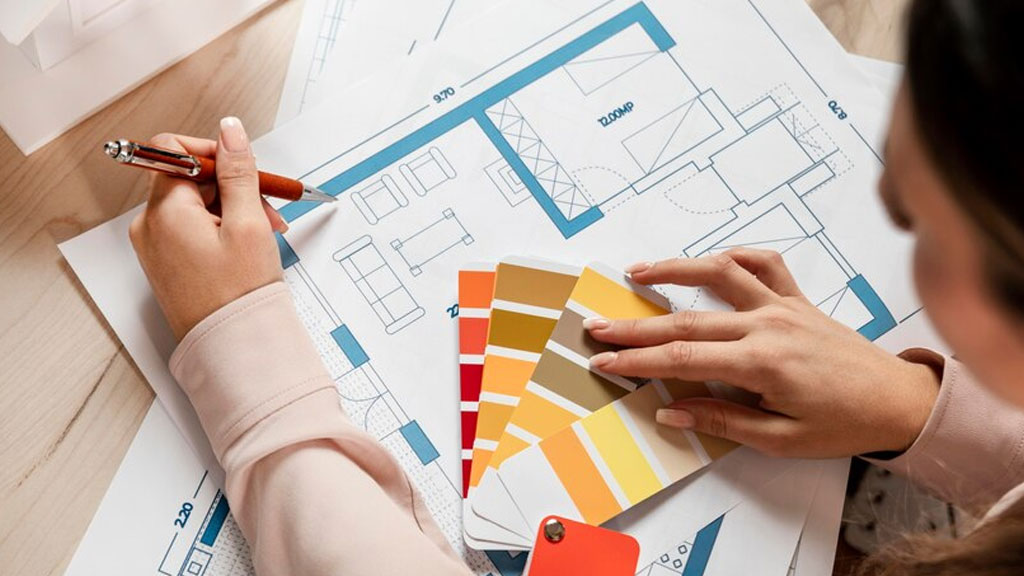Introduction: Embarking on an interior designing course is a venture into the realm where creativity meets functionality. It’s more than just arranging furniture and choosing color palettes; it’s about transforming spaces into living, breathing reflections of aesthetics and purpose. Join us as we unravel the captivating journey of an interior designing course.
- The Foundation of Interior Design: At the core of any interior designing course lies a deep understanding of design principles. Explore how courses delve into concepts like balance, harmony, scale, and proportion, laying the groundwork for creating visually appealing and functional spaces.
- Spatial Planning and Layouts: Discover the art of spatial planning – a crucial aspect of interior design. Learn how to optimize space, create efficient layouts, and understand the flow of movement within a room. From residential to commercial spaces, grasp the principles that define well-designed interiors.
- Color Theory and Psychology: Colors have the power to evoke emotions and set the tone for a space. Delve into the world of color theory and psychology, understanding how different hues can influence mood and perception. Learn the art of choosing the perfect color palette for diverse design scenarios.
- Furniture Design and Selection: Furniture is more than just functional; it’s a statement of style. Explore how interior designing courses teach the art of furniture design and selection. From understanding materials to considering ergonomics, learn to curate spaces that are not only beautiful but also practical.
- Textiles and Materials: Interior design is a tactile experience. Uncover the significance of textiles and materials in creating inviting and comfortable spaces. From curtains to upholstery, discover how the choice of fabrics and materials can add layers of texture and personality to a room.
- Lighting Design: Lighting can make or break the ambiance of a space. Learn the principles of lighting design, including the strategic placement of fixtures, the use of natural light, and the creation of focal points. Understand how lighting can enhance the overall aesthetic and functionality of a room.
- Technology Integration: Modern interior design seamlessly integrates technology into living spaces. Explore how interior designing courses keep pace with technological advancements, incorporating smart home solutions, automation, and digital design tools into the curriculum.
- Environmental Sustainability: As awareness of environmental issues grows, so does the emphasis on sustainable design. Learn how interior designing courses incorporate eco-friendly practices, materials, and energy-efficient solutions, preparing designers to contribute to a more sustainable and responsible future.
- Client Collaboration and Communication: Interior designers are not just creatives; they are communicators and collaborators. Discover how courses teach effective client communication, project management, and teamwork. From understanding client needs to presenting design concepts, learn the art of turning visions into reality.
- Real-world Projects and Internships: A hallmark of a robust interior designing course is the opportunity for hands-on experience. Explore how students engage in real-world projects, internships, and collaborations with industry professionals, bridging the gap between theory and practical application.
Conclusion: Embarking on an interior designing course is an exploration of creativity, functionality, and the transformative power of design. As you navigate through the principles, techniques, and real-world applications, remember that each space you design has the potential to tell a unique story and leave a lasting impression on those who inhabit it.

